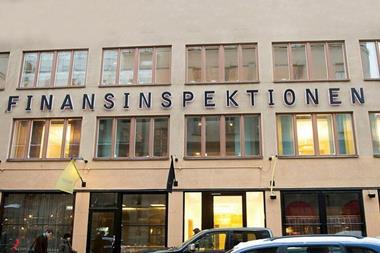Over the past few years, Italy has entered the group of the most favoured markets for real estate investment in Europe. During the last five years, approximately €15bn has been invested in single real estate asset transactions in Italy, around 4% of the total European investment volume. Of the total cross-border acquisitions recorded in Europe during the same period (around €170bn), approximately 6% involved the Italian market. Foreign investors have driven investment in Italy during the last five years; cross border transactions amounted to around 67% of total investment volumes.
In 2004, total investment volumes in Italy reached €3.5bn, a decrease of some 6% on the previous year. However, this fall was mainly due to the absence of prime international hotel investments during 2004. Excluding hotel transactions, total investment volumes would have recorded an increase of 8% on 2003.
Cross-border investments continued at a high level, with around 60% of the total involving foreign capital. Leading investor groups in 2004 were German open-ended funds, with 35% of total investments, followed by Dutch open-ended funds (17%) boosted by one transaction in excess of €300m involving a shopping centre in central Italy.
The bottom of the property cycle, the absence of domestic investors and the enormous opportunities offered by the state or state-controlled bodies wishing
to exit the property sector for structural reasons, together with Italy’s entry into the Euro-zone, signalled the arrival of the opportunistic investors into the relatively unsophisticated, and ultimately undervalued,
Italian market in the late 1990s. Between 1998 and 2003 Italy saw some of Europe’s largest portfolio transactions including:
n ENI-Goldman Sachs – €1.3bn;
n Telecom Italia-Lehman Brothers/Beni Stabili – €2.6bn;
n Fondazione Cariplo-Goldman Sachs – €380m;
n Unim-Morgan Stanley + Pirelli/Goldman Sachs/Peabody – €232m;
n RAS-Morgan Stanley/Pirelli – €1.65bn;
n Sai Fondiaria-Morgan Stanley / Pirelli €1bn;
n ENEL 2-Deutsche Bank/CDC – €1.4bn.
The ability to bring relatively sophisticated asset management principles to the Italian market, and fortuitous timing, has meant that these investors have been very successful in unlocking value and increasing both the liquidity and transparency of the Italian market.
The end of the 1990s also saw the creation of a new property investment vehicle in the Italian market, with the launch of the first closed-ended property funds under Italian law. The launch of the first funds in 1998/99 followed extensive legislative debate on the overhang of failed funds launched during the late 1980s. Initially targeted at a retail audience, there have also now been a number of successful offerings to both domestic and foreign institutional investors.
During recent years Banca d’Italia has imposed a number of variations to the original law for Italian real estate funds. These variations include tax benefits and the possibility to leverage up to 60% of the total investment volume. After the most recent law changes, fund managers are also allowed to launch funds which are constructed on stock already owned by the fund manager, which was not previously possible due to the possible conflict of interest. This type of fund is called “fondo d’apporto” and a large number of recent funds fall within this category. Advantageous taxation rates, as well as full tax transparency for foreign investors make these structures potentially a very attractive way of structuring real estate holdings in Italy. In reality these are still very much in their infancy.
By the end of 2004, closed-ended property funds had become an established feature of the Italian real estate market and the total volume of the funds reached approximately €13bn. Recently a number of funds that specialised in specific sectors have been launched or announced, including funds for retail, hotels and development activities. However, due to the high number of “fondi d’apporto” investment activity has been limited during the last two years.
The end of the 1990s also saw the arrival of institutional foreign investors, led by German open-ended funds, which started to acquire office properties in Milan. Since 2000, foreign investors have established themselves as a driving force in the market and as a result the number of direct single cross border transactions has increased.
German property funds make up the leading foreign investor group, which has invested over a range of property sectors during the last few years.
Investor interest has been focused primarily on the Milan market, the most mature Italian market.
Although institutional investors have also expressed interest in Rome during the last few years, investment volumes remain low due to limited access to the market, which is characterised by local players and the relatively less attractive occupier market, which is dominated by public administration and governmental bodies. Recently expressed interest in secondary office markets such as Bologna, Turin or Naples has not led to a significant level of investment. These markets continue to be limited to domestic investor activity, as they do not offer sufficient market transparency or access for international investors.
Jones Lang LaSalle’s global transparency index positions Italy as a “semi-transparent” market. Although market fundamentals and transparency have increased over the last few years, this varies greatly according to location and sector. Hence international market players remain concentrated in Milan and Rome and the
shopping centre market that offers opportunities across Italy.
In the past, offices have been the leading investment sector, especially among cross-border investors, with interest concentrated principally in the Milan area, Italy’s most important economic zone. Over the last decade Milan has been among the top 10 European markets in terms of presence of corporates and construction activity. Its current office stock amounts to approximately 11.3m square metres and new office construction has been readily absorbed during the last few years. Rome, with a similar market size (11.9m2) is characterised by a high presence of public administration and governmental bodies and lower transparency compared with Milan, and as a result real estate investment opportunities have been much more limited in this market.
Italy is destined to remain high on investors’ wish list of countries where they want to have exposure. Improved and improving transparency and liquidity resulting from the steadily increasing presence of institutional investors can only bring benefits. The further development of a variety of publicly traded or reserved funds will only serve to improve confidence in this market.
The very large-scale re-organisation of property holdings is now largely finished, and most of the opportunistic investors are packing up to head to new pastures. The property market in Italy today is not the one they encountered when they first arrived; it is a little more sophisticated and in better shape to face the challenges that come with a more mature environment. There are still plenty of challenges ahead, particularly when markets are less buoyant as they inevitably are from time to time. Challenges will include better asset and property management, the ability to develop new stock and the ability to maintain liquidity in what is inherently not a liquid asset. These are not challenges unique to Italy; it is just that Italy is facing them as a grown up for the first time.
Patrick Parkinson is a director and head of capital markets Italy, for Jones Lang LaSalle












No comments yet